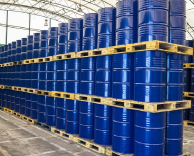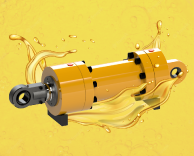How to Choose the Right Lubricant for Optimal Machine Performance.
Introduction
Lubricants play a crucial role in ensuring the seamless operation of industrial machinery and equipment. Selecting the right lubricant is the foundation of minimizing downtime, reducing wear, and extending the lifespan of your machinery. However, with the myriad of options available, making the right choice can be daunting. This guide provides actionable insights and criteria to help you select the best lubricant for your needs.
Why Choosing the Right Lubricant Matters
The choice of lubricant directly impacts:
- Machine Efficiency: Proper lubrication reduces friction, ensuring smoother operation.
- Longevity: It prevents wear and tear, prolonging the life of machinery
- Cost Savings: Reduces maintenance costs and prevents unexpected breakdowns.
- Environmental Compliance: Minimizes waste and aligns with regulations.
Key Factors to Consider When Selecting a Lubricant
1. Scope of Application
- Define the purpose of the lubricant, such as reducing friction, cooling, or corrosion prevention.
- Identify the specific machinery or system it will be used for.
- Match the lubricant’s properties with the operational requirements, such as temperature, speed, and load.
2. Physical & Chemical Properties
- Evaluate viscosity, viscosity index, and density.
- Ensure the lubricant meets testing standards for water content, acidity, and oxidation stability.
- Look for certifications such as ISO or ASTM compliance.
3. Performance Properties
- Assess key performance metrics:
- Demulsibility: Ability to separate water and maintain efficacy.
- Pour Point: Determines low-temperature usability.
- Dropping Point: Indicates high-temperature stability.
- Prioritize properties based on operating conditions.
4. Product Compatibility
- Ensure the lubricant is compatible with:
- Seals and gaskets to prevent leaks.
- Existing lubricants, if blending is required.
- Conduct compatibility tests to avoid system failures.
5. Quality Control at the Reception
- Test for contaminants, even in new oil.
- Use filtration systems to remove impurities before use.
- Validate that the supplier adheres to quality standards.
6. Lubricant Disposal
- Work with suppliers to establish proper disposal methods.
- Ensure compliance with local environmental laws and standards.
- Opt for recyclable or biodegradable lubricants where possible.
The Role of Lubrication in Maintenance
Lubrication is more than just applying oil to moving parts.
- Protects against corrosion.
- Acts as a coolant in high-temperature operations.
- Improves energy efficiency by reducing friction.
- Serves as a diagnostic tool when analyzing lubricant samples for contaminants.
- Conduct laboratory tests for viscosity, flashpoint, and oxidation.
- Use predictive maintenance techniques, such as oil analysis.
- Check for performance in real-world conditions to ensure reliability.
- Overlooking Specifications: Always check the manufacturer’s recommendations.
- Ignoring Environmental Factors: Consider temperature, humidity, and exposure to contaminants.
- Mixing Lubricants: Avoid combining incompatible products to prevent degradation.
- Neglecting Maintenance Schedules: Regularly monitor and replace lubricants as required.
- Choose bio-based or biodegradable lubricants.
- Implement recycling programs.
- Avoid over-lubrication, which leads to wastage.
- Reduces friction.
- Minimizes wear.
- Cools engine components.
- Cleans and removes debris.
- Seals gaps between parts.
- Protects against rust and corrosion.
How to Evaluate Lubricant Quality
Common Mistakes to Avoid When Choosing Lubricants
Environmental Considerations
Sustainability is a growing concern in lubrication. To minimize environmental impact:
Conclusion
Selecting the right lubricant is essential for maximizing equipment performance, reducing downtime, and ensuring operational efficiency. By considering the factors outlined in this guide, you can make informed decisions that benefit both your machinery and your bottom line.





